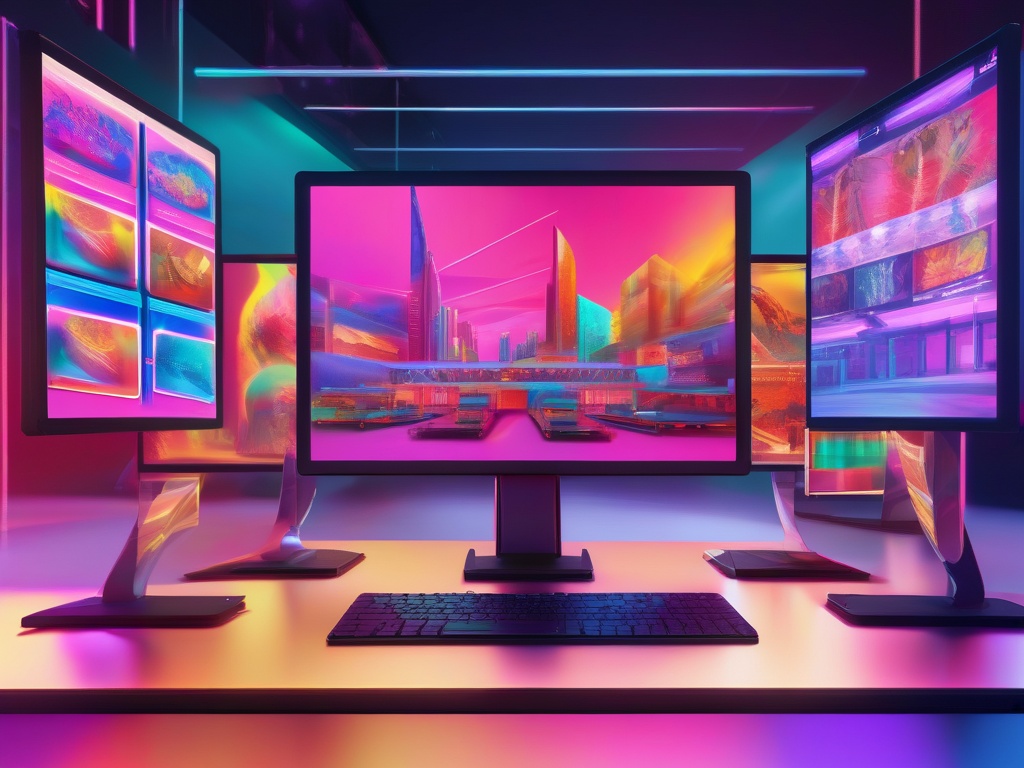
The Digital Gold Rush: Unveiling the True Value of NFTs in Today’s Market
In recent years, the world has witnessed an unprecedented surge in interest around Non-Fungible Tokens (NFTs), transforming digital assets into coveted collectibles and status symbols. As the market matures, many wonder whether NFTs are still a promising investment or just a fleeting trend.
With high-profile sales making headlines and a growing ecosystem of artists, collectors, and investors, NFTs have positioned themselves as the “digital gold rush” of the 21st century. But what exactly determines their value? Is the hype justified, or are we witnessing a bubble waiting to burst?
Decoding the True Worth of NFTs in a Dynamic Market
The core question surrounding NFTs revolves around their intrinsic value versus speculative appeal. Unlike traditional assets, NFTs derive their worth largely from rarity, provenance, and cultural significance. In today’s market, a collectible’s value can skyrocket based on celebrity endorsements, trending themes, or innovative utility—yet it can also plummet just as quickly when public interest wanes. Investors must navigate these volatile waters carefully, understanding that the true worth of an NFT hinges on factors beyond mere hype. The market’s evolution suggests a shift from purely speculative buying to a more nuanced appreciation of digital ownership, authenticity, and the potential for utility beyond simple collectibles. As more brands and mainstream platforms enter the space, the question remains: Are NFTs transitioning into a sustainable digital asset class, or is this a speculative bubble that will eventually deflate?
Beyond the Hype: Evaluating the Long-Term Investment Potential of NFTs
Peering Through the Digital Fog: Assessing True Value in a Fluctuating Market
As the initial fervor surrounding NFTs begins to settle, discerning investors are shifting focus from fleeting trends to the fundamental question: What truly sustains value in this digital landscape? Unlike traditional assets anchored by tangible assets or steady income streams, NFTs rely heavily on perception, community engagement, and innovative utility. The challenge lies in distinguishing between assets that are digitally scarce and those that offer genuine long-term utility. This requires a nuanced understanding of how an NFT’s provenance, creator reputation, and integration into broader digital ecosystems contribute to its resilience against market volatility. Investors who look beyond the surface and analyze underlying factors—such as technological infrastructure, ongoing community support, and potential for integration into future digital frameworks—are more likely to identify assets with enduring worth.
From Speculation to Sustainability: Building a Robust Digital Asset Class
For NFTs to transcend their current status as speculative commodities, the industry must evolve towards a sustainable model that emphasizes real utility. This involves leveraging blockchain technology not just for ownership verification, but for creating dynamic, interactive experiences—such as virtual real estate, gaming ecosystems, or intellectual property rights—that add tangible value. As mainstream brands and digital platforms recognize the potential for utility-driven NFTs, a new paradigm emerges—one that prioritizes long-term engagement, interoperability, and real-world applications. This transition could transform NFTs from high-stakes gambling to a credible asset class that offers consistent growth, innovation, and meaningful integration into our digital and physical lives. The key for investors is to identify projects that are aligned with this vision—those that demonstrate real utility, sustainable development plans, and a clear pathway toward long-term relevance.
NFTs and the Future of Creativity: Revolutionizing Art, Music, and Collectibles
Unlocking a New Era for Creative Expression
As the digital landscape continues to evolve, NFTs have emerged as a transformative force, fundamentally altering how creators engage with their audiences. They are no longer just a method of proving ownership but have become catalysts for innovation across art, music, and collectibles. This shift signifies a profound democratization of creative industries, where artists and musicians can bypass traditional gatekeepers and directly monetize their work in ways previously unimaginable. In this new paradigm, the value of creativity is measured not solely by aesthetic appeal but also by the potential for audience engagement, utility, and long-term digital presence.
What sets NFTs apart in this revolution is their capacity to embed provenance and scarcity within blockchain technology, thereby enhancing authenticity and ownership rights. This innovation empowers creators to explore new formats such as interactive artworks, programmable music, and dynamic collectibles that evolve over time. As a result, artists are no longer confined by physical limitations or gallery spaces—they can participate in a global ecosystem where their work can be experienced, bought, and sold instantaneously, creating a fertile ground for ongoing innovation and collaboration.
Driving Cultural and Economic Shifts in the Creative Sector
The impact of NFTs extends beyond individual artists, reshaping entire industries. Major brands and entertainment giants are increasingly integrating NFTs into their marketing strategies, offering fans exclusive access, limited editions, and immersive experiences. This integration is fostering a new economy where digital assets hold not just aesthetic value but also cultural significance and social capital. For collectors and investors, this means that acquiring NFTs could soon be seen as investing in the future of digital culture itself—an asset that intertwines creative expression with economic opportunity.
Moreover, the ongoing development of utility-driven NFTs—such as virtual concert tickets, digital fashion, or in-game assets—signifies a new era where the lines between creator, consumer, and participant blur. This interconnected ecosystem promises to revolutionize how we perceive ownership, participation, and value in the digital age. While skepticism remains about the sustainability of these innovations, the undeniable momentum suggests that NFTs are poised to redefine the very fabric of creative industries, making them more inclusive, dynamic, and interconnected than ever before.
